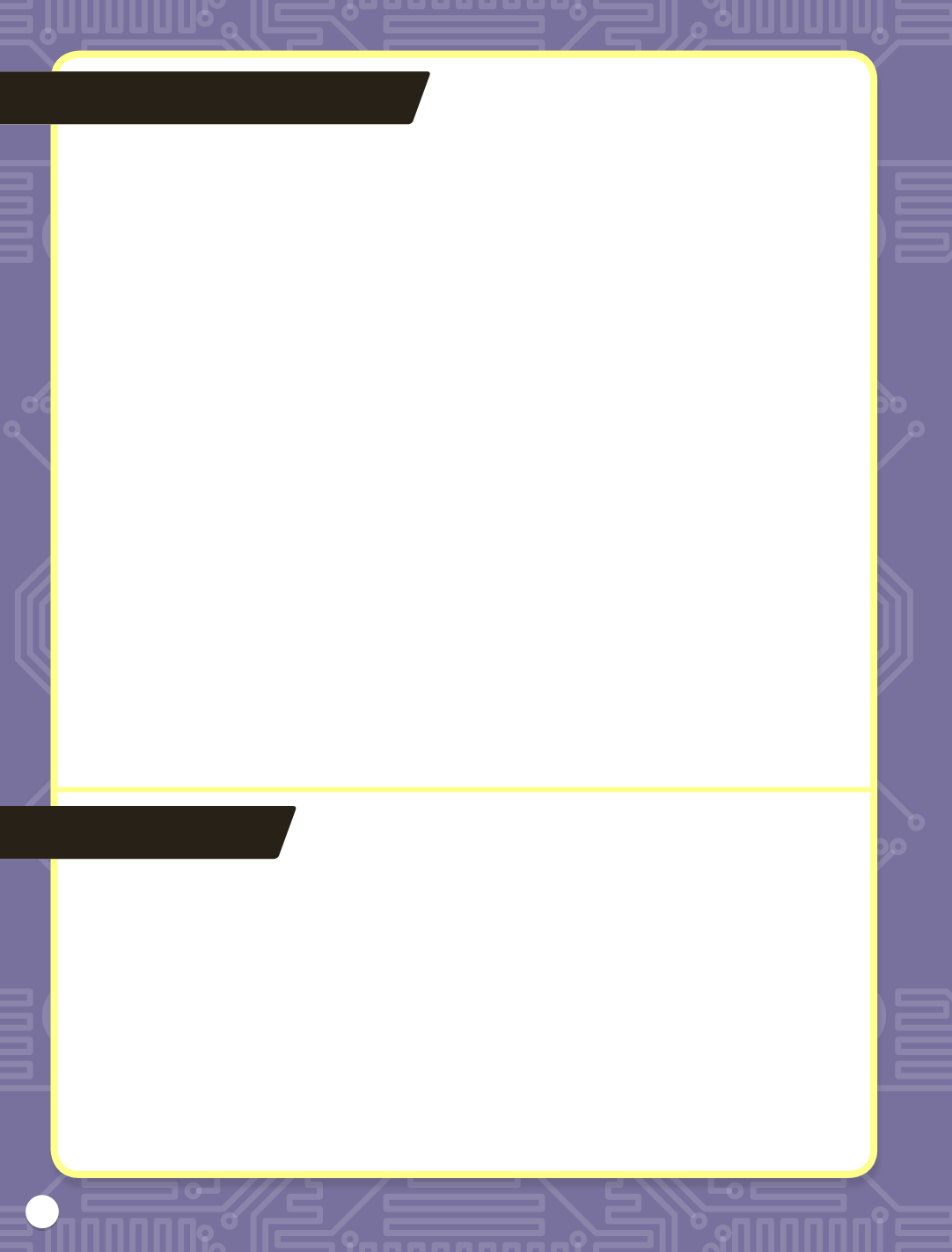
32
GLOSSARY
Attribute
Extra information about an object or text, such as its
style, font, width or height.
Browser
A program used to view websites and HTML
pages. Popular browsers include Chrome, Firefox, Internet
Explorer and Safari.
Code
A set of words, numbers or symbols that tells a computer
what to do.
Command
A word or set of numbers and symbols that tells the
computer what to do.
Debugging
Fixing problems (bugs) in a computer program.
Domain
A part of the internet that is made up of computers or
websites that are related in some way. For example, they may
all be in the UK and have web addresses ending .co.uk.
Download
To copy data from one computer to another using
the internet.
Editor (or text editor)
A program used to type and edit
programs.
Email
A system for sending messages from one computer to
another using the internet.
Event
Something that happens while a program is running; for
example a key being pressed, or the program starting.
Function
A sequence of commands created to do something
such as draw a square every time the function is run or ‘called’.
HTML (Hyper Text Mark-up Language)
The language used
to define the objects or elements that are on web pages.
HTTP (Hyper Text Transfer Protocol)
Rules for transporting
HTML pages over the internet.
Hyperlink
Link to another web page, which can be reached by
clicking the mouse or touching a touchscreen.
Indent
Using tabs or spaces to move a line of code in from the left.
Input
An action (such as pressing a key) that tells a program to
do something.
Internet
A worldwide network of computers.
JavaScript
The programming language used in some web
pages to make them more interactive.
Language
A system of words, numbers, symbols and rules for
writing programs.
Listener
A line of code or function that is only run when a
particular event happens, such as a button being clicked.
Loop
A sequence of commands repeated a number of times.
Network
A group of computers connected by wires or, often
today, wireless links.
Online
Connected to the internet.
Program
The special commands that tell a computer how
to do something.
Protocol
A system of rules.
Server
A computer or group of computers that stores and
delivers web pages.
Tags
Special words used to describe what objects there
are on a web page. They are always surrounded by angle
brackets <>.
Upload
To transfer files from your computer to another
computer, which is often larger and in a different place.
URL (Uniform Resource Locator)
The address or location
of a website or HTML page. It is usually shown at the top of
the browser window.
Variable
A value or piece of data stored by a program.
Web page
A page of information constructed using HTML
and connected to the World Wide Web.
Wireless
Communicating without connecting wires, often
using radio waves.
World Wide Web (or web)
A worldwide network of HTML
files, which we can access using the internet.
INDEX
addresses 4, 5, 10
Berners-Lee, Tim 4
browsers 5, 6, 8, 17
bugs 28–29
coding guidelines 29
colours 13, 14–15, 22–23
copyright 25, 27
creating web pages 6–7
CSS files 26
debugging 28–29
domains 10
FTP programs 27, 31
functions 20–23
HTML (Hypertext Mark-up Language) 5,
6–15, 22–25, 26, 28–29, 31
HTTP (Hypertext Transfer Protocol) 5
hyperlinks 4, 10, 11–13, 24–25
indents 9
inputs 21
Internet safety 2, 26
JavaScript 5, 16–23, 26, 29, 31
linear programs 22
listeners 16, 17
loops 18–19
Mac 6, 7, 13, 31
networks 4
Pets Project 24–25
photos and pictures 25, 26, 27
programming languages 5, 16
protocols 5
Quiz Program 21
quote marks 7, 13, 16, 17, 25, 31
saving work 7
servers 5, 26, 27
sharing your website 26–27
Sublime Text 13, 31
tags 6, 8, 9, 11, 12, 13, 15, 26
testing your website 26
text editors 6, 7, 13, 31
uploading your website 27
URL (Uniform Resource Locator) 4, 10, 11
variables 18, 19
website builders 26
webspace 27
World Wide Web (web) 4–5


